








Midweek Update 20 October 2023Google Banner Ad THIS WEEK IN MIDWEEK UPDATE Two new helicopters for SAPS Air Wing. Milkor's flagship UAV takes flight. Diamond DA42-VI flying with Sustainable Aviation Fuel for the first time. One year out of bankruptcy, MD Helicopters on Upswing. Cessna Citation Longitude Reaches 100th delivery, marking significant milestone for the clean-sheet super-midsize jet. Royal Danish Air Force and Lockheed Martin celebrate arrival of first four Danish F-35 aircraft. Rain and Sikorsky collaborate to advance rapid response capabilities for aerial wildland firefighting. Joby begins flight testing with pilot on board. Wingcopter drones deliver everyday goods for the first time in Germany. The construction of VoltAero's final assembly facility for its Cassio electric-hybrid aircraft is initiated at Rochefort Airport in France This week in History - Bonus Video - Kit Planes for Africa   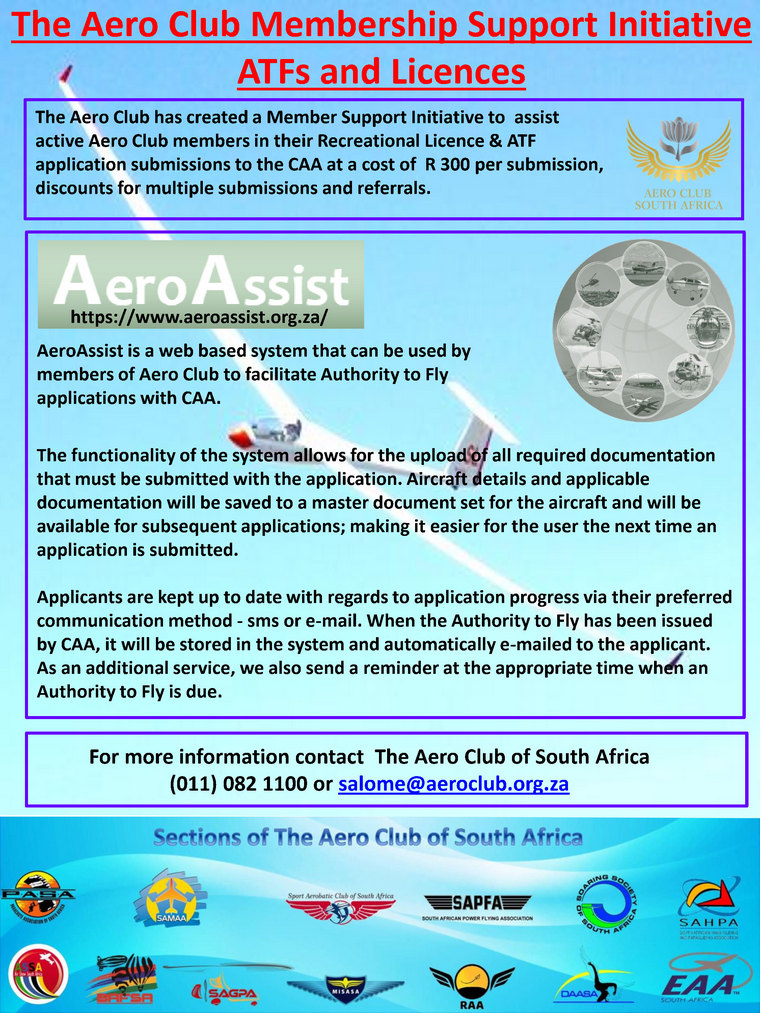 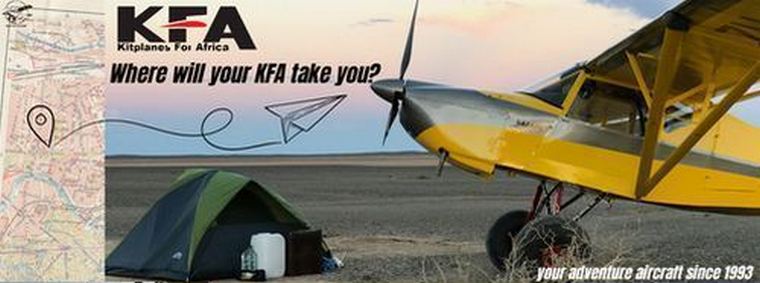   21 Tedderfield Sun's out Buns out Breakfast Fly In. Alan 083 702 3680 14 to 22 SAC World Advanced Aerobatic Championships training in the USA. Contact Annie Boon E-mail: info@anniesaviationcorner.com 24 October to 4 November. SAC Advanced World Aerobatics Championships Las Vegas. Contact Annie Boon E-mail: info@anniesaviationcorner.com 28 SAPFA SA Landing Championships - Brits & Stellenbosch airfields. Contact Ron Stirk E-mail: melron@mweb.co.za Cell: 082 804 445 0373  4 EAA Chapter 322 breakfast fly-in gathering, boot sale, fly market EAA Auditorium. Contact Neil Bowden E-mail: airadventuresa@gmail.com 4 Brakpan Aero Club Cessna fly-in. Contact Clarissa E-mail: Clarissa@airborneaviation.co.za Cell: 074 113 2911 4 Gyro Fly-In Kitty Hawk Airfield. All aircraft welcome. RSVP Juanita 082 040 9798 11 EAA Chapter 322 breakfast fly-in venue TBA. Contact Neil Bowden E-mail: airadventuresa@gmail.com 13 to 17 Dubai Airshow 2023. Contact: henrietta.fernandes@dubai.aero 18 EAA National & Chapter 322 Annual Awards Dinner Venue TBA. Contact Neil Bowden E-mail: airadventuresa@gmail.com 25 Aero Club Awards 50 Viking Way Rand Airport (Menno Parsons hangar). Contact Sandra Strydom sandra@aeroclub.org.za Tel: 011 082 1100 26 SAA Museum Rand Airport in Memoriam SA 295 Helderberg. For more information call 076 879 5044 or email info@saamuseum.co.ca    TWO NEW HELICOPTERS FOR SAPS AIR WING The South African Police Service (SAPS) Air Wing has taken delivery of another two H125 light utility helicopters from Airbus as it recapitalises its rotary wing fleet. The two helicopters were officially taken into service by SAPS National Commissioner, General Fannie Masemola, during a ceremony at Grand Central Airport in Midrand on 1 September. The first new H125 procured as part of the latest order from Airbus was received on 12 December by Masemola at Grand Central Airport where Airbus Helicopters Southern Africa is based. At the time he said the helicopter would be based in Gauteng to bolster crime combatting operations.  More H125s are on the way, with Business Day reporting seven are being acquired for R400 million. State-owned defence materiel agency Armscor, in its latest newsletter, reports that it has a service level agreement (SLA) with the SAPS for the new rotorcraft. The SLA includes "acquisition and procurement services to achieve synergy across the [Cabinet] security cluster departments". "As Armscor we also have a role of working with industry to ensure that we are able to support government entities to be able to deliver on what they need to do," Segomotso Tire, Armscor Executive Manager: Business Development and Industry Support said. "Over and above serving its primary client - the Department of Defence (DoD) - the Armscor Act makes provision for the acquisition agency to support other government departments in line with the legislated mandate." Ongoing projects at hand between Armscor and the SAPS include disposal of "obsolete landward and aeronautical platforms and other ancillaries" the Armscor newsletter has it. "Through lifecycle support and maintenance management services on new and existing platforms are part of the offer to the SAPS to ensure service readiness in an efficient and effective manner." Armscor on behalf of the SAPS was tasked with disposing of 13 of the Air Wing's 13 BO 105 helicopters, grounded in 2017. A single private buyer acquired seven as part of an Armscor tender last year. Armscor previously facilitated the purchase of six R44 helicopters for the SAPS, delivered from 2008 onwards. The SAPS Air Wing now operates 16 AS350/H125 helicopters. Airbus says its H125 is "a multi-mission workhorse" with manoeuvrability, excellent visibility and low in-cabin vibration levels. The rotary wing aircraft has a flat floor that can be quickly and easily reconfigured for missions including aerial work, firefighting, law enforcement, rescue, air ambulance, passenger transport and others. Other rotorcraft in the SAPS fleet include six R-44 Raven IIs, two MD500s and a BK 117. Fixed wing aircraft include eight PC-6 Turbo Porters (the ninth was destroyed in a crash in August 2022), a PC-12, a King Air C90 and a Citation Sovereign jet. Half the fleet is based in Gauteng with the remainder deployed throughout the country. SAPS aircraft are used in policing operations including crime prevention, vehicle tracking and pursuit, dagga plantation spraying, crowd control and monitoring, VIP transport and search and rescue operations. Some are equipped with hoists, cameras, searchlights and slings. Most Air Wing responsibilities entail responding to crime call-outs. It also provides air support monitoring of public protests and major events, including support to specialised units such as the Special Task Force, National Intervention Unit and Tactical Response Teams. More than 2 000 airborne law enforcement operations are typically carried out every year, the majority by helicopters. With regard to personnel numbers, the SAPS employs about 50 pilots and 300 support staff in the Air Wing.  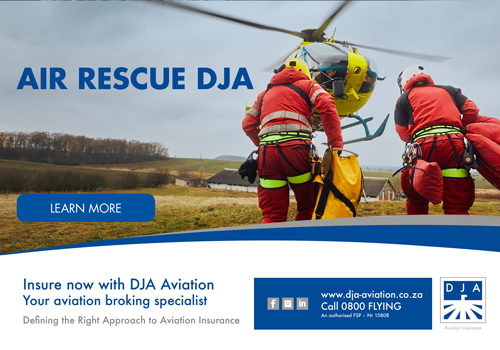 Milkor has flown its Milkor 380 unmanned aerial vehicle (UAV) for the first time, marking a giant milestone in the development of its flagship aircraft - the largest armed UAV designed and built in Africa. The maiden flight on 19 September put South Africa among a handful of countries globally to have successfully developed and flown a UAV of this size - the aircraft has a wingspan of 18.6 metres and maximum takeoff weight of 1 300 kg. The Milkor 380 was unveiled in 2018 and began taxi testing earlier this year. Daniel du Plessis, Marketing and Communications Director at Milkor, said the first flight "is a significant achievement for Milkor and the South African Defence Industry (SADI)." Flight trials and sensor integration will continue throughout 2023. Specifically designed for long endurance Intelligence, Surveillance, Target Acquisition and Reconnaissance (ISTAR) operations, the Milkor 380 will be able to carry 210 kg of external payload, including weapons and sensors - it has already been displayed with Al Tariq X-series precision guided munitions, Halcon Desert Sting DS-16 guided bombs, FZ602 laser-guided rocket launchers, an L3-Harris gimbal, and Airborne Technologies' Self Contained Aerial Reconnaissance (SCAR) Pod. Milkor has earmarked the first five units of the UAV for domestic use with the first aircraft produced at its 10 000 square metre manufacturing facility in Cape Town already being tested and evaluated exclusively by South Africa. Milkor, Armscor and the South African Air Force inked the memorandum of understanding during the Africa Aerospace and Defence (AAD) expo in September last year. "Having a locally developed UAV of this scale greatly enhances opportunities for the South African National Defence Force (SANDF), South African Police Service (SAPS) and Border Management Authority (BMA) to increase their operational capabilities, while enjoying embedded support to ensure extended operational readiness," du Plessis said. "The only way to secure a long-term service life for South African end users is to share the responsibility for operational readiness with the local industry. Many of the other platforms that were imported have proven that, due to the increased cost of international support, over time operational readiness decreases and these programmes do not survive beyond five years," he added. First demonstrations of the Milkor 380 to the public are expected during the African Aerospace and Defence Exhibition in September 2024 - Milkor is the Diamond Sponsor of the event. In addition to meeting domestic requirements, Milkor is looking towards the international UAV market as there is massively growing interest in procuring such systems across the globe. Milkor is well-positioned to meet global demand, as it now has offices in India, the United Arab Emirates, Saudi Arabia, and Poland as well as South Africa. "Over the past few years, the use of UAVs in active conflicts has shown their intrinsic value and we look forward to engaging with end users and decision makers around the world," du Plessis said. "In developing this platform, we have also ensured that we are able to provide a turnkey solution by manufacturing all the critical components in-house. We are confident that our system is capable of meeting their requirements and are committed to ensuring that we deliver new technologies in the unmanned aerial vehicle environment." With an endurance of up to 35 hours, the Milkor 380 is classified as a medium altitude long endurance (MALE) UAV. Its 210 kg payload capacity allows for a wide array of weapons and equipment to be carried on five hardpoints, such as synthetic aperture radar, jammers, electro-optical gimbal etc. All avionics, communications and payload integration capabilities of the aircraft have been developed in-house.  DIAMOND DA42-VI FLYING WITH SUSTAINABLE AVIATION FUEL FOR THE FIRST TIME Recently, following extensive tests and preparations, training aircraft from the European Flight Academy, a brand of Lufthansa Aviation Training GmbH (LAT), made a few circuits of the aerodrome at Bremen Airport for the first time. The DA42-VI from the Austrian aircraft manufacturer Diamond Aircraft was fully fuelled with Sustainable Aviation Fuel (SAF). Eco-consciousness and responsible use of resources has always been at the core of Diamond Aircraft. The history started with efficient and lead-free jet-fuel engines and is going forward with electrification as well as alternative fuels and propulsion systems. Diamond Aircraft and Austro Engine anticipate increasing availability of ASTM D7566 SAF blends as a "drop-in" fuel for General Aviation in the coming years and plans to release the entire fleet for this fuel mix by the end of 2025. Significant market penetration of SAFs is expected by 2030 and availability of 100% pure SAFs without blending for 2050. Birgit Bubelach, Head of Training Services at Lufthansa Aviation Training, commented on this at the event: "I am very pleased that we are all standing here together today and are able to witness this test flight of one of our European Flight Academy training aircraft, fueled for the first time with SAF. This has been made possible by our long-standing good partnership with the airport operator as well as the fuel supplier here at Bremen Airport, who, at our request and without hesitation, were available to our training aircraft manufacturer Diamond and its engine manufacturer Austro Engine for the testing of SAF for their engines." Mathias Offen, Head of Training Services adds: "Today's test flight with SAF in one of our training aircraft is an essential building block on the way to sustainable pilot training at our flight schools, which we as the European Flight Academy are embarking on together with our training aircraft manufacturer Diamond." Robert Kremnitzer, Head of Design Organization at Diamond Aircraft Austria: "SAF is the most immediately available key to reducing CO2 emissions in aviation. The majority of the Diamond fleet can benefit directly from using kerosene piston engines. We are very pleased to be able to demonstrate this as a model example through the cooperation with our partner LAT and Bremen Airport, and we are convinced that we will jointly pave the way here." "Despite the system-related advantage of a kerosene piston engine in terms of CO2 emissions, any further development towards overall CO2 reduction is of great importance to us. SAFs represent a welcome opportunity to immediately optimize existing fleets with respect to decarbonization. These fuels have by now been sufficiently tested for use in turbines and their increased use saves tons of CO2. Kerosene-fueled piston engines play only a minor role in aviation due to their low volumes globally and their low emissions in general. As a result, it was very difficult for us to procure these "new" fuels for analysis and testing, let alone to participate in their certification in order to address the specific requirements of a compression-ignition piston engine," says Felix Zahradnik, Chief Technology Officer at Austro Engine. "However, by cooperating with LAT, one of our main customers, and with the great support of Bremen Airport as well as WFS, we were able to procure enough fuel for extensive investigations on engine test benches and test flights in preparation for the certification of SAFs. We look forward to working with our customers to shape the future of aviation." Commenting on the decision to provision Sustainable Aviation Fuel (SAF), Bremen Airport's Managing Director as well as its COO & project manager stated the following:Dr. Marc Cezanne, Managing Director Bremen Airport: "As part of our climate protection strategy, we decided in 2018 to provide Sustainable Aviation Fuel (SAF) at Bremen Airport. As a result, a tank farm for SAF as well as a reliable supply chain for the procurement of the more environmentally friendly kerosene were established. Since mid-2022, we have been offering 'green kerosene' to all airlines at our Airport. We are very pleased that Lufthansa Aviation Training (LAT) is now flying from Bremen with significantly reduced emissions." Christian Knuschke, Chief Operating Officer & project manager, Bremen Airport: "The planning and implementation of the SAF project was ambitious, but successful. We are currently able to store around 50 cubic meters of SAF at Bremen Airport, but in the long run we aim at further developing our capacity in line with the market. Already at this point, this makes Bremen Airport a pioneer on the road to green aviation." Matt Whitton, Vice President, World Fuel Services: "Collaboration is key in accelerating SAF adoption, and we commend the dedication of all involved parties in making this project a success. The group's pioneering effort in SAF use aligns with our mission to expand SAF access and broaden the understanding that this is a drop-in fuel ready for use in any aviation application. World Fuel Services continues to work daily with producers and end users to advance SAF accessibility and promote its versatility for a greener aviation industry." 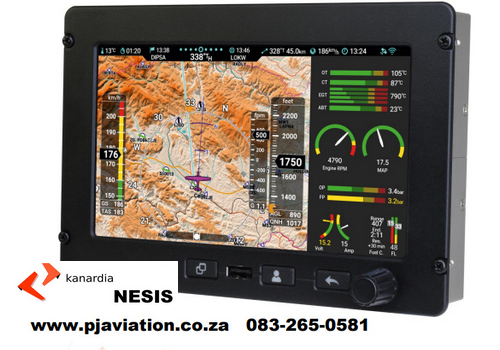  ONE YEAR OUT OF BANKRUPTCY, MD HELICOPTERS ON UPSWING After exiting bankruptcy a year ago and having delivered just five rotorcraft for all of 2022, MD Helicopters is well into a turnaround that will see the company deliver 19 airframes this year and more than 20 in 2024. "[Next year] is a conservative plan," MD president and CEO Brad Pedersen said. He added that the company's board of directors gave him the objective of "how to get to 50 a year. In its efforts to "attract and retain most capable and qualified employees," Pedersen said, MD has focused on retention and hiring a stable skilled workforce. During 2022, retention was as bad as it can get, with 150 people hired and 150 departing, but that turned around in 2023, with 163 hired and a retention rate of 98 percent. "Prior to the bankruptcy, there was a lot of uncertainty and instability," he said, as well as a shortage of skilled workers as the Covid pandemic eased. Near MD's Mesa, Arizona headquarters, competition for aerospace workers is fierce. Another effort underway is to modernize the parts ordering and tracking system which had been done on Excel spreadsheets and via phone calls and emails. MD is implementing a new e-commerce system that will allow customers to track their orders. A new service centre council, comprised of six of the 40 MD service centres worldwide, meets once a quarter to air out the most pressing issues. "They serve as a sounding board across the network to make us better collectively," said aftermarket v-p Weeks. Unlike the situation under the previous owners, MD is now giving suppliers a longer forecast of what items are needed to keep the fleet flying and build to meet the backlog. "We're trying to forecast our needs and critical demand," he said, "and make sure we're able to plan better. We have to make sure our supply is smooth because we're ramping up production." On the repair side, MD has had to build a new exchange pool, which it didn't have before. "We were living hand to mouth in terms of satisfying demand," Weeks said. "We should have reconditioned assets on the shelf." As MD continues to grow away from the decline that led to the bankruptcy, it is adding new resources and once again offering upgrades to the field. Service centres, for example, will be able to do 500E to 530F conversions, and MD has partnered with a provider on Rolls-Royce 250-C30 engine conversions, work that used to be done solely at MD's facility in Mesa. A maximum gross weight increase that customers used to have to pay for is now free. And new crash-resistant fuel tanks are nearing certification and will soon be available. As it looks to the future, MD is also clearing up some historical products that didn't prove worthwhile. While it will always support the Notar 500 and 600 series and the twin-engine 900/902, there are no plans to return the single-engine Notars back to production, Pedersen said. "We are keeping the supply base going and we're committed to keeping those folks flying. For the 902, we're still looking at options. I'd like to see it back in production, but it's a very large investment to do that. We'll have an announcement in the next 30 days on the 902 line." 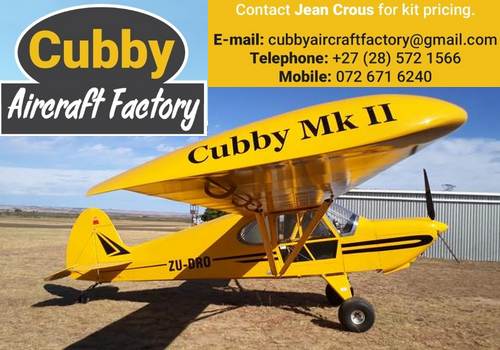  CESSNA CITATION LONGITUDE REACHES 100TH DELIVERY, MARKING SIGNIFICANT MILESTONE FOR THE CLEAN-SHEET SUPER-MIDSIZE JET Textron Aviation today announced that it has delivered the 100th flagship Cessna Citation Longitude business jet to a longtime Citation customer. Textron Aviation employees celebrated this significant milestone with a special celebration at the company's headquarters in Wichita. "The Citation Longitude's performance, efficiency and unrivaled cabin experience have already made it a legendary aircraft in its segment," said Lannie O'Bannion, senior vice president of Global Sales and Flight Operations. "We're proud of this significant delivery milestone and of our talented team who continues to design and deliver the best aviation experience for our customers." The Citation Longitude is equally designed around the pilot experience, passenger comfort and overall performance, delivering an aircraft that lives up to its designation as the flagship of the Citation family of business jets. No other super-midsize business jet offers more range, greater payload or higher cruise speed at a lower direct operating cost. With a range of 3,500 nautical miles and full fuel payload of 1,600 pounds, the Citation Longitude is designed to elevate passenger expectations in the super-midsize class by delivering the quietest cabin, a low cabin altitude (4,950 feet) more standard features and a comfortable, bespoke interior. With seating for up to 12 passengers, including an optional crew jump seat, the Longitude features a stand-up, 6-foot tall flat-floor cabin. A standard double-club configuration delivers the most legroom in the super-midsize class. Fully berthable seats are designed and manufactured in-house, and a spacious walk-in baggage compartment is accessible throughout the flight. State-of-the-art cabin technology enables passengers to manage their environment and entertainment from a mobile device. The spacious cockpit incorporates easier access and an ergonomic design that fully focuses on crew comfort and efficiency. The clean-sheet design of the Longitude integrates the latest technology throughout the aircraft, bringing customers the lowest direct operating cost in its class. Powered by FADEC-equipped Honeywell HTF7700L turbofan engines, the Longitude combines on-condition engine overhaul periods to best-in-class airframe intervals of 18 months / 800 hours, whichever occurs first. Textron Aviation's full time diagnostics aircraft recording system (AReS), LinxUs and 3D Technical Publications combine advanced technology to reduce maintenance downtime and overall costs to operation.   The Kingdom of Denmark officially celebrated the in-country arrival of its first four permanently based F-35A Lightning II aircraft at Skrydstrup Air Base, Denmark. During the ceremony, Lockheed Martin officially handed over the certificate of ownership of Denmark's F-35s to the Danish Ministry of Defence Acquisition and Logistics Organization. More than 450 Danish and allied government, military and industry leaders gathered to commemorate the milestone, and over 10,000 local citizens participated in the Royal Danish Air Force's public open house. During the open house the public learned more about the F-35's mission for Denmark, industry suppliers and witnessed the F-35 and F-16 on flying display. "Arrival of the first F-35 combat aircraft in Denmark is a historic event for the Danish Defence and the Royal Danish Air Force. It is thanks to close and professional cooperation between Lockheed Martin, the F-35 partnership and the Danish Defence, that Danish Defence now cross the threshold into the future of air defence," said Danish Minister of Defence, Troels Lund Poulsen. Denmark has played a critical role on the F-35 program, joining in 2002 as a partner during the System Development and Demonstration phase, strategically influencing technical elements of the program. The Royal Danish Air Force also contributed a Danish F-16 to the Joint Strike Fighter 461st Flight Test Squadron at Edwards Air Force Base, California where it served as a chase plane for the F-35 Development, Test & Evaluation program. Danish industry has also contributed to F-35 production, development and sustainment activities and today, is building parts and components for each of the projected 3,100+ aircraft to be manufactured. "This milestone event is the realization of the vision, foresight and strategic investment Denmark made more than a decade ago. We expect that the F-35 will play a crucial role in 21st century security missions for Denmark, delivering unmatched 5th Generation capability, connectivity and interoperability," said Greg Ulmer, executive vice president, Lockheed Martin Aeronautics. "The F-35 integrates joint forces, providing an unparalleled network effect across allied forces and significantly strengthening alliance-based deterrence across all domains." Denmark has taken delivery of 10 F-35s to date, four of which are now at Skrydstrup Air Base and six of which are stationed at Luke Air Force Base, Arizona, where Danish pilots and maintainers are conducting training. Denmark has plans to purchase 27 F-35 aircraft in total. Denmark's F-35 fleet will play a pivotal role in bolstering NATO's collective resilience in the Baltics and strengthening the alliance's ability to deter and defend against all threats across all domains. Denmark is the 10th country and fifth European NATO nation to operate the F-35 from its home soil. The F-35's growing presence in Europe increases collaboration with trusted allies and partners through a multilateral, multinational approach, ensuring an effective deterrent against near-peer competitors. 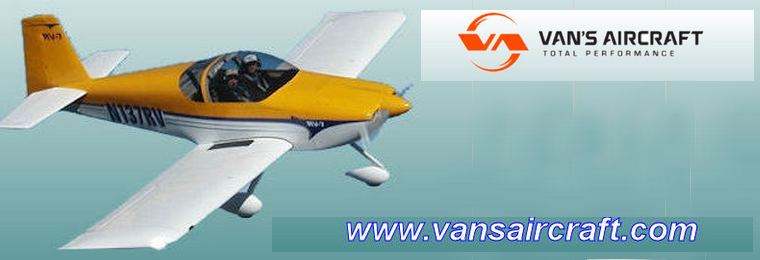 Rain, an aerial wildfire containment technology company, and Sikorsky, a Lockheed Martin company, announced at the UP. Summit a collaboration to explore how Sikorsky's Matrix autonomy suite operating with Rain's wildfire mission autonomy system, can launch uncrewed helicopters to drop water on wildfires within minutes of detection. "Ultimately, Rain envisions equipping fire agencies with the capability to strategically position a future fleet of firefighting aircraft capable of receiving and carrying out mission commands." This collaborative effort will use Rain's wildfire mission autonomy system to upload mission commands to Sikorsky's optionally piloted Black Hawk helicopter with no crew on board for the fastest response time. Brodie pointed to research showing that a 15-minute reduction in wildfire response times could generate $3.5 to $8.2 billion in economic benefits annually for the state of California alone. Developed for more than a dozen years by Sikorsky Innovations, an advanced engineering group within Sikorsky, the Matrix system combines a platform-agnostic software and hardware suite, including sensors, to ensure an aircraft flown with reduced crew or uninhabited can fly reliably and safely in low-level and obstacle-rich terrain. Even with no humans on board, an aircraft with the Matrix system does not require a remote pilot or ground controller to command the mission via datalink, nor waypoints to navigate. "Matrix executes a full mission plan by taking into account mission goals and constraints, aircraft performance, obstacles, weather, and topography," said Igor Cherepinsky, Sikorsky Innovations director. "The system is fully integrated with the flight controls, allowing the aircraft to fly with high levels of autonomy in all environmental conditions. Matrix is just one example, our predictive Firefighting Intelligence capabilities being another, of how Lockheed Martin is integrating 21st century security technology to help first responders fight wildfires faster and more effectively." To date, Matrix has been tested on 10 different rotary- and fixed-wing aircraft and can be applied to existing or new build applications. Rain integrates with early wildfire detection networks to rapidly dispatch autonomous aircraft. Onboard the aircraft, the Rain wildfire mission autonomy system identifies and locates wildfire, develops a suppression strategy, and plans flight path and drop timing to enable on-target delivery of suppressant. Throughout operations, the wildfire mission autonomy system shares intelligence and plans, providing firefighters with situational awareness and oversight of the mission to ensure safety and coordination. Rain and Sikorsky's collaboration will demonstrate autonomous capabilities to enable firefighting helicopters to be pre-positioned in remote locations according to wildfire risk. Operating uncrewed, and deployable 24/7, the integrated offering would provide fire agencies the ability to rapidly respond to ignitions in hard-to-access regions in varied terrain, supporting fire agencies with new tools in their mission to prevent catastrophic wildfires in the areas they serve. 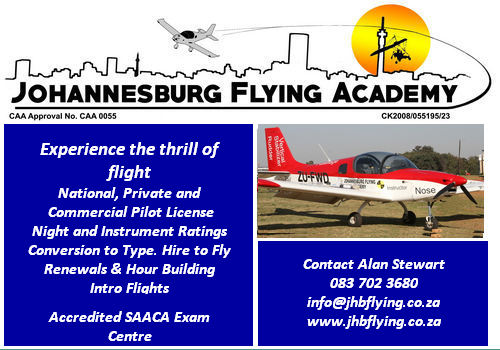  Four Joby pilots have completed flights on board the electric air taxi; Flights took place at Joby's production facility in Marina, CA; Flying with pilot on board marks critical step on company's journey to commercial operations Four members of Joby's flight test team have now piloted flights on board the Company's pre-production prototype aircraft, completing a series of initial tests that included free thrustborne hovers and forward transitions to semi-thrustborne flight. The testing took place at the company's Pilot Production Facility in Marina, CA and complements ongoing flight testing at Edwards Air Force Base announced in September, where both Joby and U.S. Air Force pilots will demonstrate the aircraft's capabilities in realistic operating scenarios. To date, the majority of Joby's flight testing has been piloted remotely from a ground control station (GCS), using state-of-the-art communications technology and software. This has allowed the company to generate a vast amount of data on the performance of the aircraft across a broad range of flight conditions. The pilot on board campaign was led by Joby Chief Test Pilot James "Buddy" Denham and was designed to gather data on the aircraft's handling qualities and pilot control interfaces, supporting the development of the aircraft and laying the groundwork for future "for credit" testing as part of the company's ongoing certification program with the Federal Aviation Administration (FAA). "Having helped design and test flight controls for a wide variety of aircraft, including all three variants of the F-35 Joint Strike Fighter, nothing compares to the simplicity and grace of the Joby aircraft," said Denham. "After completing more than 400 vertical take-offs and landings from the ground, it is a privilege to sit in the cockpit of our aircraft and experience first-hand the ease and intuitive nature of the design that the Joby team has developed." During the testing, Joby pilots assessed the ease of conducting a number of tasks and manoeuvres that pilots will be required to perform during normal operations, including vertical take-offs, accelerating and transitioning to forward flight, runway centreline tracking, and decelerating to a vertical landing on a representative landing pad. Evaluation of these mission task elements (MTEs) will support the certification of the Joby aircraft as well as the company's ongoing work with the Department of Defence. Joby recently announced it will locate its first scaled aircraft manufacturing facility in Dayton, Ohio, the birthplace of aviation, producing up to 500 aircraft per year.   The drone deliveries are intended to sustainably improve local supply in the region. The project is being funded by the German Federal Ministry for Digital and Transport (BMDV) as part of the "Innovative Air Mobility" funding directive with a total of around 430,000 euros. Initially, the two districts of Rehbach and Würzberg well outside Michelstadt will be served. Residents of these districts can order everyday goods such as non-perishable milk, eggs, fruit and vegetables, canned food and many other non-refrigerated products via the website www.liefermichel.de and have them delivered to their homes at a desired time. The orders are flown by Wingcopter to set landing points just outside of the villages, from where they are transported to the end customers by electric cargo bike. To start with, a wide range of products from the local REWE store will be available for selection. Other local retailers will be added to the platform as the project progresses. The pilot project is being scientifically accompanied by the Frankfurt University of Applied Sciences, which is evaluating the service from an economic and ecological perspective. The Frankfurt UAS also takes care of the cargo bike rides. It has a profound expertise in the field of last-mile logistics with cargo bikes and small electric vehicles (LEV - light electric vehicles). Alongside the city of Michelstadt and REWE, Vodafone and Riese & Müller were won as associated project partners. The mobile communications company Vodafone provides the necessary mobile communications infrastructure so that the Wingcopter drones have a secure and stable connection to the ground station throughout the flight. The cargo bikes used are produced and provided by e-bike pioneer Riese & Müller, also based in the Odenwald region. In the villages involved, many local retailers have closed their stores in recent years, forcing residents to drive to Michelstadt or other towns to do their shopping - in some cases well over 10 kilometers each way. Especially for smaller errands weighing up to 4 kilograms, LieferMichel users can now leave their cars behind. Another advantage is that flying with the all-electric delivery drones is also more environmentally friendly than traveling by car. Based on the experiences in Michelstadt, a sustainable and scalable business model is to be developed to improve local supply in other rural regions of Germany as well through fast, ecologically reasonable and reliable delivery of everyday goods by drone. After all, although many smaller stores have disappeared in rural areas in recent years, food delivery services that deliver orders within a few minutes have so far been limited to urban areas. The project partners see enormous potential here. The project will initially run until the end of 2023 and will be continued if it proves successful.   VoltAero marked another important step toward the full-scale production of its Cassio electric-hybrid aircraft family with today's groundbreaking for a final assembly line at Rochefort Airport in the Charente-Maritime department of France's Nouvelle-Aquitaine region. This 2,400-square-meter facility will serve as the build-up site and delivery center for VoltAero's all-new product line of Cassio general aviation/regional aircraft. It positions VoltAero at a strategic location in southwest France with a dynamic economy and an established presence of industry - including the aviation sector. The master plan incorporates the potential for VoltAero's future growth of up to 7,400 square meters at Rochefort Airport, as well as enabling suppliers and service providers to develop their own presence as they support the Cassio production. Aligned with VoltAero's strategy of introducing Cassio as a highly eco-efficient multi-role aircraft, the company's Rochefort Airport industrial facility has been conceived with a focus on sustainability. In addition to meeting or exceeding the requirements of France's RT 2005 regulations for energy-efficient buildings, the project management team went further with features that include a mixed concrete/wood structural design and the use of wooden floors where appropriate, along with rainwater harvesting and photovoltaic panels for electrical power. Construction is now underway, with the facility's completion targeted for August 2024. It will incorporate the final assembly line, a workshop, logistics area and the design/engineering offices. At full rate, VoltAero anticipates producing approximately 150 Cassio family aircraft per year. "With today's groundbreaking milestone for our final assembly facility, VoltAero is once again delivering on its promise of bringing a clean-sheet design airplane to market for safe, quiet, efficient and eco-friendly flight using electric-hybrid propulsion," said Jean Botti, VoltAero's CEO and Chief Technology Officer. Alain Rousset, President of the Nouvelle-Aquitaine Region, added: "The production of Cassio aircraft at Rochefort Airport ensures that our region will be at the forefront of the aeronautics sector's decarbonization. Nouvelle-Aquitaine was one of the first partners for Jean Botti and his teams as they began developing their hybrid-electric aircraft concept, and we look forward to seeing Cassio airplanes as they are delivered from the final assembly line." Project management for the construction of VoltAero's final assembly facility at Rochefort Airport is the responsibility of a regional association of airports called the Syndicat Mixte des Aéroports de La Rochelle - Ile de Ré et Rochefort - Charente-Maritime. The prime contractor role has been assigned to the Rochefort-based SD Architectes agency. "VoltAero represents the type of highly innovative companies that we are looking to support at Rochefort Airport in developing the aviation industry's future," stated Gérard Pons, President of the Syndicat Mixte des Aéroports de La Rochelle - Ile de Ré et Rochefort - Charente-Maritime. Advantages of the industrial site for VoltAero include its direct access to Rochefort Airport's existing 2,280-meter-long X 45-meter-wide runway, as well as the availability of the region's road, rail and sea transportation links. The VoltAero Cassio aircraft family will be a highly capable and reliable product line for regional commercial operators, air taxi/charter companies, private owners, as well as in utility-category service for cargo, postal delivery and medical evacuation (Medevac) applications. By integrating VoltAero's patented electric-hybrid propulsion system into the company's purpose-designed airframe, Cassio will deliver an order of magnitude higher performance as compared to the current competition, and provide significantly lower operational costs. The VoltAero propulsion concept is unique: Cassio aircraft will utilize an electric motor in the aft fuselage-mounted hybrid propulsion unit for all-electric power during taxi, takeoff, primary flight (if the distance traveled is less than 150 km.), and landing. The hybrid feature - with an internal combustion engine - comes into play as a range extender, recharging the batteries while in flight. Additionally, this hybrid element serves as a backup in the event of a problem with the electric propulsion, ensuring true fail-safe functionality. VoltAero's first production aircraft version will be the Cassio 330, with a four/five-seat interior configuration and operating on a combined electric-hybrid propulsion power of 330 kilowatts. It is to be followed by the six-seat Cassio 480 with a combined electric-hybrid propulsion power of 480 kilowatts, and the Cassio 600 - sized at a 10/12-seat capacity with electric-hybrid propulsion power of 600 kilowatts.    South Africa, Kroonstad Airfield: A Piper PA-25-260 Pawnee D crashed about 1km from Kroonstad Airfield (FAKS), Kroonstad, Free State. The sole pilot died and the aircraft was destroyed by fire. According to preliminary information, the 22-year-old pilot was on her final ag rating training flight when the accident happened. South Africa, Springs Airfield (FASI), Ekurhuleni, Gauteng: A Jodel F12was involved an inflight breakup at Springs Airfield (FASI), Ekurhuleni, Gauteng. The pilot (owner) and his passenger died and the aircraft was destroyed. Preliminary information indicates the airplane was passing by 3-4 times for photographers. Review of an online video shows that the right wing abruptly pitched up, followed by the left wing. Note: this F12 was not built by Falconar as it was amateur built by Nantus vander Merwe as a Jodel F12 in the late 70's and restored to flying condition in 1986 by Fanie Bezuidenhout. After an accident at 8 July 2004 and another in July 2017 the aircraft was rebuilt by him with a spare part of wings as a two-seater. Belize. Placencia: An accident with two fatalities is reported in a small airstrip near Placencia, Belize. The airplane was stolen and crashed shortly after take-off as it hit electric wires. Both occupants died in the crash. The airplane was consumed by fire. Apparently, the intention was to use the airplane for transporting drugs. USA, South off H.A. Clark Memorial Field (KCMR), Williams, AZ: A Piper PA-28-140 Cherokee Cruiser lost power shortly after take-off from H.A. Clark Memorial Field (KCMR), Williams, Arizona, and crashed south of the airport in a field. The three occupants died and the aircraft was destroyed. France, Gulf of Valinco, off Propriano, Corsica: A Robin DR.400/180 Regent crashed after take-off from Propriano Airfield (PRP/LFKO), Tavaria, Corsica, into the sea in the Gulf of Valinco. The crash occurred a 100m off the coast, near Cap Laurosu at Capu beach. The four occupants died and the aircraft was destroyed.  The first mid-air collision ever 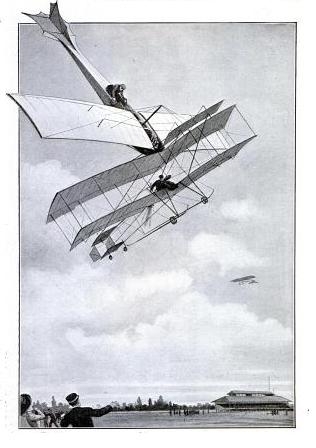 At the end of the event - on 2nd or 3rd October, according to the source - a French aviator René Thomas, flying Antoinette IV monoplane, collided with a Farman III biplane, flown by British Army Capt. Bertram Dickson. Thomas rammed the Dickson´s aircraft, hitting it from the tail side. Fortunately, both of them survived the crash, however Dickson´s injuries were so serious he never flown again. There are no data about the aircraft, but given the materials they were made of, we can presume both were damaged beyond repair. The aviation pioneers managed to fly without any fatal mid-air collision until 1912. That year, on 19th June, two French Army aircraft collided in the morning mist at Douai, France, killing both pilots.  Kit Planes for Africa  Google Banner Ad |
                                  |
 |
 |

Copyright © Pilot's Post PTY Ltd
The information, views and opinions by the authors contributing to Pilot's Post are not necessarily those of the editor or other writers at Pilot's Post.